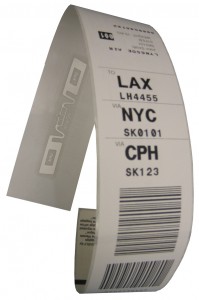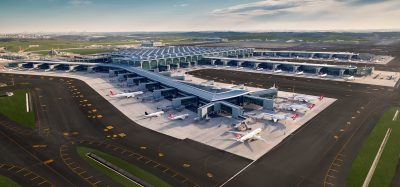Aalborg Airport implements RFID for baggage sortation
- Like
- Digg
- Del
- Tumblr
- VKontakte
- Buffer
- Love This
- Odnoklassniki
- Meneame
- Blogger
- Amazon
- Yahoo Mail
- Gmail
- AOL
- Newsvine
- HackerNews
- Evernote
- MySpace
- Mail.ru
- Viadeo
- Line
- Comments
- Yummly
- SMS
- Viber
- Telegram
- Subscribe
- Skype
- Facebook Messenger
- Kakao
- LiveJournal
- Yammer
- Edgar
- Fintel
- Mix
- Instapaper
- Copy Link
Posted: 9 June 2010 | Søren Svendsen, CEO, Aalborg Airport | No comments yet
An overwhelming increase in travellers has made it necessary for Aalborg Airport to grow its baggage handling capacity. Today the baggage sortation is handled manually, but in order to accommodate the increase in routes, it became clear that it needs to be automated. Aalborg Airport had two choices, either barcode or RFID technology. Aalborg Airport chose RFID because of the immediate advantages, but also because this technological platform is able to offer entirely new passenger services. Furthermore, RFID is supported by IATA.
An overwhelming increase in travellers has made it necessary for Aalborg Airport to grow its baggage handling capacity. Today the baggage sortation is handled manually, but in order to accommodate the increase in routes, it became clear that it needs to be automated. Aalborg Airport had two choices, either barcode or RFID technology. Aalborg Airport chose RFID because of the immediate advantages, but also because this technological platform is able to offer entirely new passenger services. Furthermore, RFID is supported by IATA.
We have almost doubled the number of weekly departures over the last two years and it is still growing. First of all, we need a new technology that can help us handle this increase in the volume of baggage. RFID is the future for baggage handling and will be able to provide us with new possibilities for accurate baggage handling, as well as passenger services that we could not provide without it. Step one is to increase our baggage handling capacity, but the RFID technology offers many other possibilities. Therefore, the RFID solution from Lyngsoe will be the platform for a completely new way of thinking and providing passenger services. RFID technology is furthermore supported by IATA, which is very important for us and the industry.
World news
RFID technology is rapidly developing and even though Lyngsoe has developed and implemented RFID on baggage in three other airports, Aalborg Airport will be the first in the world with sortation information stored in the RFID tag. Making this possible is the 512 bit memory – larger than ever before. No other airport in the world has a baggage handling system even close to the simple, yet advanced, set-up that Aalborg Airport will have.
No change at check-in
The check-in procedure will remain the same. A barcode label will still be printed, and travel information will still be registered into the system, allowing the destination airport to receive and sort out the baggage automatically for your next flight (transit baggage). However, if the transit airport can handle RFID for baggage sortation, the barcode is unnecessary. The only new thing that passengers travelling from Aalborg Airport will see is the RFID tag included in the barcode label. The check-in procedure will remain unchanged.
Why choose RFID?
- Higher read-rate with automatic reading using RFID, resulting in less bags for manual sortation
- RFID reading point is less expensive to purchase and maintain
- Interface between the information system and the airports’ sorting system via a “Message Provider” (an external system and supplier that sends travel information from the airlines’ booking system to the airports’ sorting system) is no longer necessary since the sortation information is included in the RFID tag
- Usage fee for ‘Message Provider’ is consequently also saved.


High read rate – less manual sorting
A barcode scanner must be able to ‘see’ the barcode directly in order to be able to read it, whereas RFID uses radio waves and does not need direct line of sight between tag and reader. Furthermore, a barcode that has become creased, damp, or otherwise damaged can be difficult to read automatically, unlike the RFID tag. These differences alone provide a higher read-rate with Lyngsoe’s RFID tech – nology – more than 99 percent. This means that only a very small number of bags need to be sorted manually.
Information flow – RFID technology
The RFID tag has a memory, making it possible to include travel information in the tag which follows the bag. Unlike barcode technology, the information does not need to be sent through a separate system. Therefore, the investment for an interface to a ‘Message Provider’ and its usage fee are saved up front. All in all, with the new RFID system, Aalborg Airport is going to have a simpler, cheaper and more reliable baggage handling system, not to mention a more intelligent and usable platform for new passenger services.
About the Author
Søren Svendsen
Søren Svendsen was educated at the SAS leadership college in Denmark and is a Bachelor of Commerce in HR and Administration. He has many years experience in the aviation industry and held the position of Station Manager at Aalborg from 1995-2001. In 2001 he added Billund Airport to his list of responsibilities and in 2003 he took on Aarhus Airport also. Mr Svendsen was made CEO of Aalborg Airport in 2008.


















